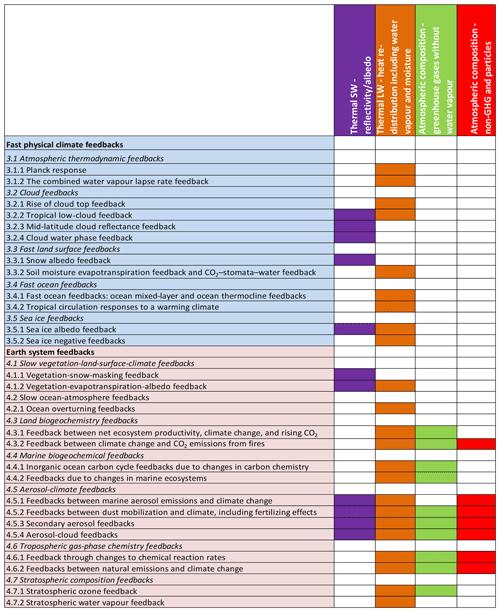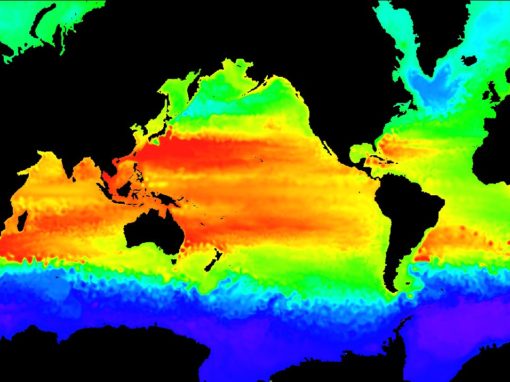For a few years we were looking for a neat table comparing all climate feedbacks side by side. Finally we found one in this new study about how feedbacks are handled in Earth System and Climate models. Not exactly structured as we thought, but maybe even more interesting, lumping feedbacks into “Fast” and “Slow” and “Physical” vs. “BioGeoChem”.
The strongest and fastest negative feedback (ie cooling / stabilizing) happens to be one almost never mentioned in media accounts of Global Warming re accelerating “positive” feedbacks:
A general strong fast negative feedback to surface and tropospheric air temperature warming is the Planck feedback, often referred to as Planck response. The warmer a body gets, the more energy it radiates (see feedback diagram in Fig. 5a). This feedback has long been understood; it is based on the Stefan–Boltzmann law. For the atmosphere, it is described, for example, in Jonko et al. (2013): “The Planck feedback is the response of LW TOA [longwave at the top of the atmosphere] flux to a perturbation in surface temperature that is applied to each vertical layer of the troposphere.” The Planck response is the strongest negative feedback (see quantifications in Bony et al., 2006; Jonko et al., 2013; Soden and Held 2006) and has been found to stabilize the surface temperature response to realistic forcings towards a new equilibrium state. Only if other – positive – feedbacks grew to much larger levels than currently expected could the Planck feedback be overcome, and a runaway greenhouse effect would result. In principle, the Planck feedback could also work in the absence of an atmosphere.”
(our emphasis)

Quoted in Climate feedbacks in the Earth system and prospects for their evaluation by Christopher Heinze, et al. in Earth Systems Dynamics (ESD) Journal, edited by none other than … Axel Kleidon. He has a new paper in pre-print that adds a whole other dimension to these models, potentially, incorporating STRUCTURES – both biotic and human.



